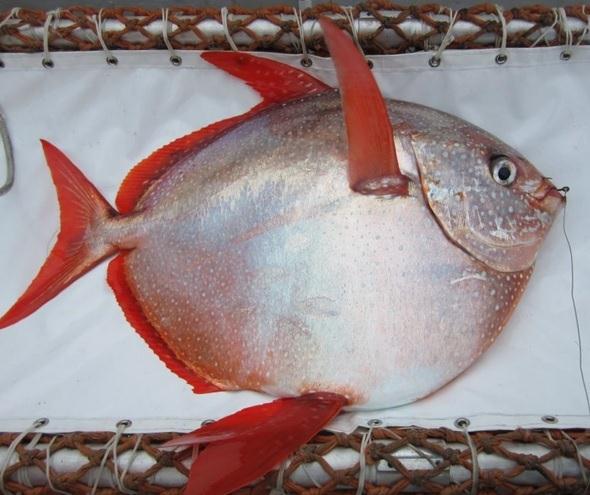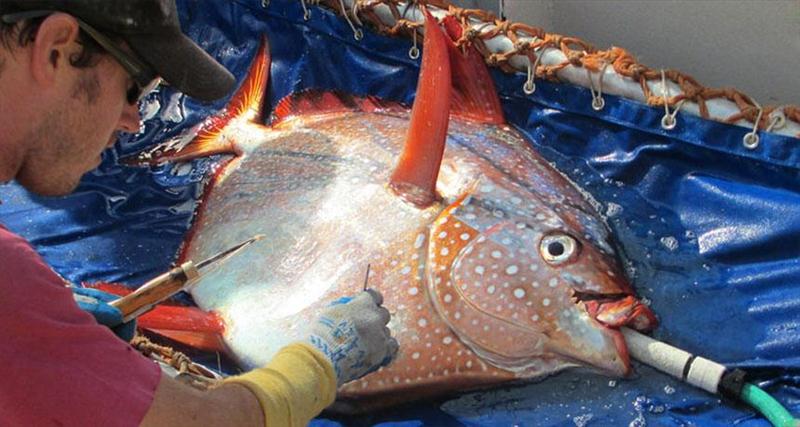15 May, Washington:
The opah, or moonfish, is the first known fully warm-blooded fish that circulates heated blood throughout its body much like mammals and birds, U.S. researchers said Thursday.
Some large predatory fish such as tuna and some sharks can warm muscles or organs during pursuit, but the opah is the first fish found to keep its whole body, including its heart and brain, warmer than the environment, they reported in the U.S. journal Science.

A silvery fish roughly the size of a large automobile tire, the opah is known from oceans around the world, dwells hundreds of feet beneath the surface in chilly, dimly lit waters and harnesses the heat generated during flapping of its large, red pectoral fins.
By attaching temperature monitors to opah caught during surveys off the U.S. West Coast, the researchers found the fish had an average muscle temperature about 5 degrees Celsius above the surrounding water while swimming about 150 to 1,000 feet ( about 45 to 300 meters) below the surface.

Fish that typically inhabit such cold depths tend to be slow and sluggish, conserving energy by ambushing prey instead of chasing it.
The warm-blooded advantage, however, turns the opah into a high- performance predator that swims faster, reacts more quickly and sees more sharply, lead author Nicholas Wegner of the National Oceanic and Atmospheric Administration’ Southwest Fisheries Science Center said.
“Before this discovery I was under the impression this was a slow-moving fish, like most other fish in cold environments,” Wegner said in a statement. “But because it can warm its body, it turns out to be a very active predator that chases down agile prey like squid and can migrate long distances.”
Wegner found the opah’s gill tissue has an unusual design: blood vessels that carry warm blood into the fish’s gills wind around those carrying cold blood back to the body core after absorbing oxygen from water.
That means that warm blood leaving the body core helps heat up cold blood returning from the respiratory surface of the gills where it absorbs oxygen.
In addition, the opah has fatty tissue that surrounds the gills, heart and muscle tissue to insulate them from the frigid water, which effectively protects its body from heat loss.
“There has never been anything like this seen in a fish’s gills before,” Wegner said. “This is a cool innovation by these animals that gives them a competitive edge.” Xinhua






